Publications
| 2024 | ||
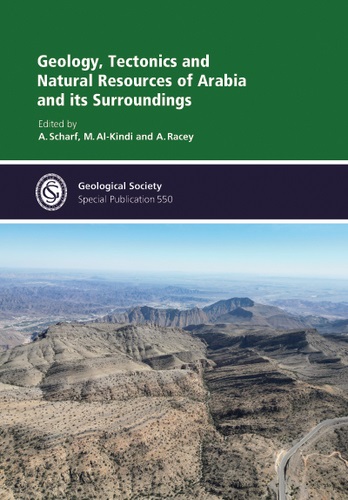 | End of the Cretaceous Gulick, S. P. S. CPSH #0075 The Cretaceous ended when the Chicxulub asteroid struck the Yucatán platform, and all deposits and landforms generated are earliest Paleocene in age. Drill core from the Cretaceous-Paleogene (K-Pg) boundary sequence deposited on top of the Chicxulub impact structure’s peak ring… | |
 | The Astrochemistry Low-energy Electron Cross-Section (ALeCS) database Brandt A. L. Gaches, Tommaso Grassi, Stefan Vogt-Geisse, Giulia M. Bovolenta, Claire Vallance, David Heathcote, Marco Padovani, Stefano Bovino, and Prasanta Gorai CPSH #0073 We introduce and describe the public ALeCS database. For the initial release, we include total ionization cross sections for >200 neutral molecules and several cations and anions calculated with different levels of quantum chemistry theory… | |
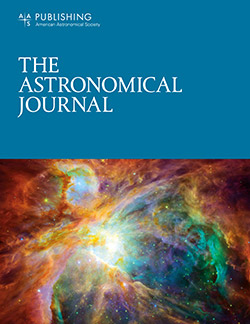 | Direct Exoplanet Detection using Convolutional Image Reconstruction (ConStruct): A New Algorithm for Post-processing High-contrast Images Wolf, T.N., Jones, B.A., Bowler, B.P., The Astronomical Journal CPSH #0070 We present a novel machine-learning approach for detecting faint point sources in high-contrast adaptive optics (AO) imaging data sets. The most widely used algorithms for primary subtraction aim to decouple bright stellar speckle noise from… | |
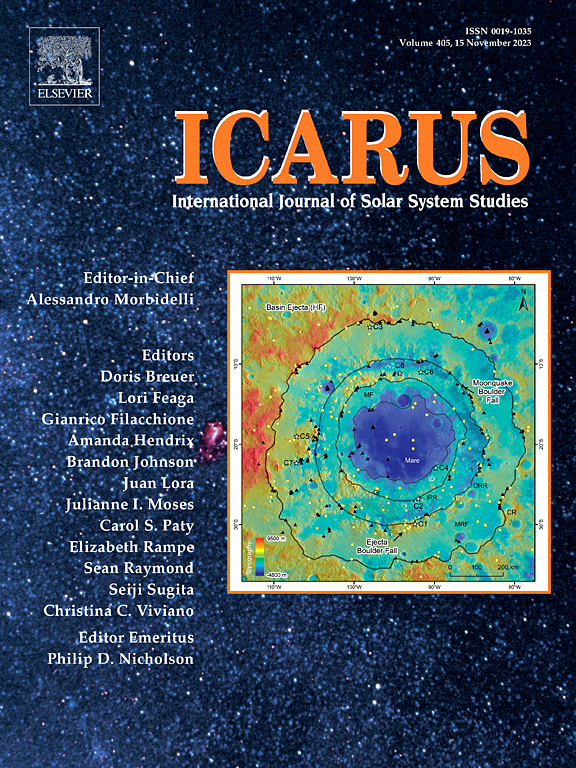 | Limited recharge of the southern highlands aquifer on early Mars Hiatt, E., Shadab, M.A., Gulick, S.P.S., Goudge, T.A, Hesse, M.A., Icarus CPSH #0068 To determine plausible groundwater recharge fluxes on early Mars, we developed analytic and numerical solutions for an unconfined steady-state aquifer beneath the southern highlands. We showed that the aquifer’s… | |
| 2023 | ||
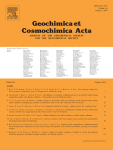 | Zircon (U-Th)/He Impact Crater Thermochronometry and the Effects of Shock Microstructures on He Diffusion Kinetics Ross, C.H., Stockli, D.F., Erickson, T., Gulick, S.P.S., Geochimica et Cosmochimica Acta CPSH #0071 Accurate age determination of impact cratering events remains difficult and controversial. Less than a quarter of all documented impact craters are regarded as accurately and precisely age dated. Zircon (U-Th)/He (ZHe) dating of impactites has received recent attention as a novel technique to date impact… | |
 | HD 191939 revisited: New and refined planet mass determinations, and a new planet in the habitable zone Orell-Miguel, J., Nowak, G., Murgas, F., Palle, E., Morello, G., Luque, R., Badenas-Agusti, M. et al., Astronomy and Astrophysics CPSH #0058 HD 191939 (TOI-1339) is a nearby (d=54pc), bright (V=9mag), and inactive Sun-like star (G9 V) known to host a multi-planet transiting system. Ground-based spectroscopic observations confirmed the planetary nature of the three transiting sub-Neptunes (HD 191939 b, c, and d) originally detected by TESS and were used to measure the masses for planets b and c with 3σ precision. | |
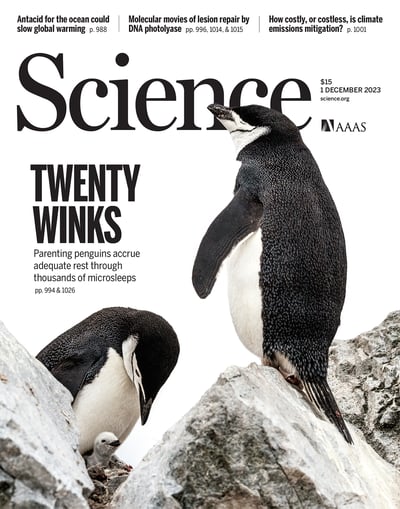 | A Neptune-mass exoplanet in close orbit around a very low-mass star challenges formation models Stefánsson, G., Bowler, B.P., Cochran, W.D., Endl, M., Hill, G.J., Zeimann, G., et al., Science Theories of planet formation predict that low-mass stars should rarely host exoplanets with masses exceeding that of Neptune. We used radial velocity observations to detect a Neptune-mass exoplanet orbiting LHS 3154, a star that is nine times less massive than the Sun. The exoplanet’s orbital period is 3.7 days, and its minimum mass is 13.2 Earth masses. We used simulations… | |
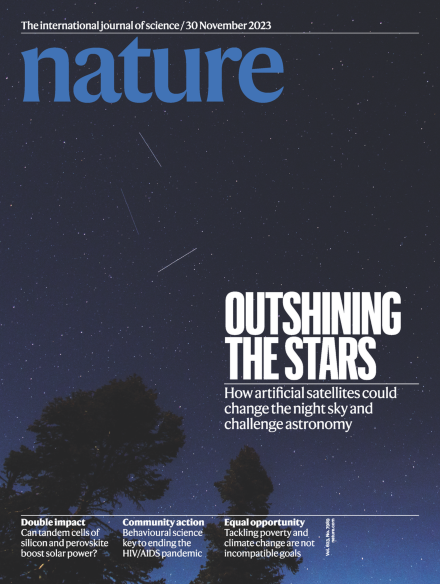 | A resonant sextuplet of sub-Neptunes transiting the bright star HD 110067 Luque, R., Osborn, H.P., Leleu, A., Cochran, W.D., et al. Nature CPSH #0063 Planets with radii between that of the Earth and Neptune (hereafter referred to as ‘sub-Neptunes’) are found in close-in orbits around more than half of all Sun-like stars. However, their composition, formation and evolution remain poorly understood. The study of multiplanetary systems offers an opportunity to investigate the outcomes of planet formation and evolution while… | |
 | How old is the Ordovician–Silurian boundary at Dob’s Linn, Scotland? Integrating LA-ICP-MS and CA-ID-TIMS U-Pb zircon dates Garza, H., Catlos, E., Chamberlain, K., Suarez, S., Brookfield, M., Stockli, D., & Batchelor, R., Geological Magazine CPSH #0069 Sedimentary rocks exposed at Dob’s Linn, Scotland, have significantly influenced our understanding of how life evolved over the Ordovician to Early Silurian. The current interpreted chronostratigraphic boundary between the Ordovician and Silurian periods is a Global Boundary Stratotype Section and Point (GSSP), calibrated to 443.8 ± 1.5 Ma (Hirnatian–Rhuddanian age), based on… | |
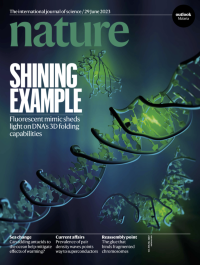 | Inference and reconstruction of the heimdallarchaeial ancestry of eukaryotes Eme, L., Tamarit, D., De Anda, V., Seitz, K.W., Dombrowski, N., Baker, B.J., et al., Nature In the ongoing debates about eukaryogenesis—the series of evolutionary events leading to the emergence of the eukaryotic cell from prokaryotic ancestors—members of the Asgard archaea play a key part as the closest archaeal relatives of eukaryotes1. However, the nature and phylogenetic identity of the last common ancestor of Asgard archaea and eukaryotes remain unresolved Here we… | |
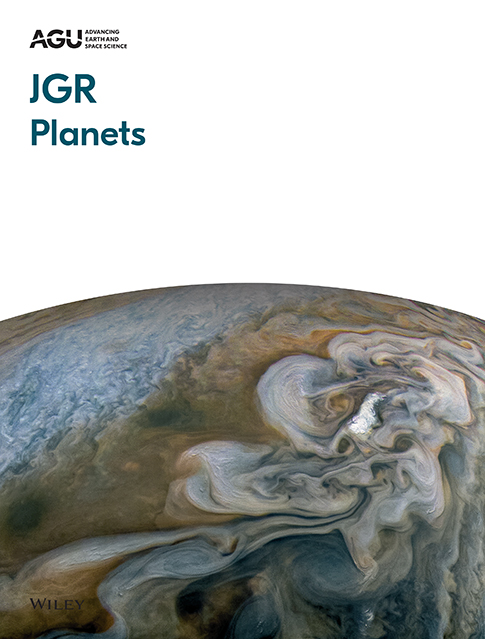 | Assessing Controls on the Incomplete Draining of Martian Open-Basin Lakes Goudge, T.A., Fassett, C.I., Coholich, M., Bamber, E.R., JGR Planets CPSH #0061 Over 250 hydrologically open paleolakes, which filled with water before catastrophically breaching, have been identified on Mars. These open-basin lakes are recognized by the topographic geometry of a closed contour below the elevation of the outlet, indicating the lake was incompletely drained by the breach flood. Here we explore factors that controlled how completely a given open-basin lake on Mars drained using… | |
| 2022 | |
 | Confirmation and characterisation of three giant planets detected by TESS from the FIES/NOT and Tull/McDonald spectrographs Bieryla, A., Buchhave, L.A., Stassun, K., Collins, K.A., Nowa, G., et al., Astronomy & Astrophysics CPSH #0053 We report the confirmation and characterisation of TOI-1820 b, TOI-2025 b, and TOI-2158 b, three Jupiter-sized planets on short-period orbits around G-type stars detected by TESS. Through our ground-based efforts using the FIES and Tull spectrographs, we have confirmed these planets and characterised their orbits, and find periods of around 4.9 d, 8.9 d, and 8.6 d for TOI-1820 b, TOI-2025 b, and TOI-2158 b, respectively. |
 | Genomes of six viruses that infect Asgard archaea from deep-sea sediments Rambo, I.M., Langwig, M.V., Leao, P., Anda, V, D., Baker, B.J., et al., Nature Microbiology. Asgard archaea are globally distributed prokaryotic microorganisms related to eukaryotes; however, viruses that infect these organisms have not been described. Here, using metagenome sequences recovered from deep-sea hydrothermal sediments, we characterize six relatively large (up to 117 kb) double-stranded DNA (dsDNA) viral genomes that infected two Asgard archaeal phyla, Lokiarchaeota and Helarchaeota. |
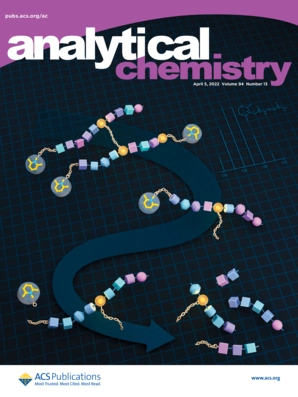 | Absolute carbon stable isotope ratio in the Vienna Peedee Belemnite isotope reference determined by 1H NMR spectroscopy Hoffman, D.W., and Rasmussen, C., et al., Analytical Chemistry, v. 94, p. 5240-5247. CPSH #0045 The Vienna Peedee Belemnite (VPDB) isotope reference defines the zero point of the carbon stable isotope scale that is used to describe the relative abundance of 13C and 12C. An accurate and precise characterization of this isotope reference is valuable for interlaboratory comparisons and conducting robust carbon stable isotope analyses in a vast array of fields, such as chemical forensics, (bio)geochemistry, ecology, or (astro)biology. |
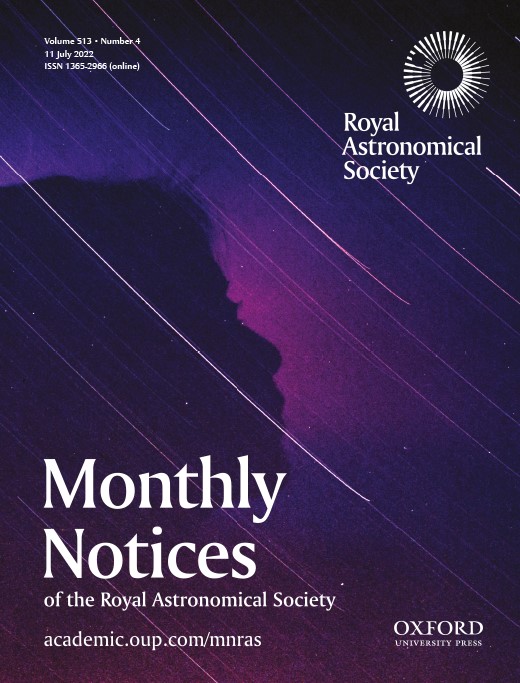 | TOI-2046b, TOI-1181b, and TOI-1516b, three new hot Jupiters from TESS: planets orbiting a young star, a subgiant, and a normal star Kabáth,P., Chaturvedi,P., MacQueen, P.J., Skarka, M., Šubjak, J.,Esposito, M., Cochran, W.D., et al., Monthly Notices of the Royal Astronomical Society, Volume 513, Issue 4 CPSH #0054 We present the confirmation and characterization of three hot Jupiters, TOI-1181b, TOI-1516b, and TOI-2046b, discovered by the TESS space mission. The reported hot Jupiters have orbital periods between 1.4 and 2.05 d. |
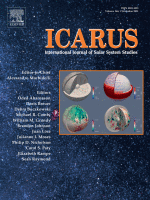 | Constraining the formation of paleolake inlet valleys across crater rims Bamber, E.R., Goudge, T.A., Fassett, C.I., Osinski, G.R. et al., Icarus CPSH #0048 Impact crater lakes with an inlet valley were common on Mars during past epochs. However, it has not been established exactly how impact craters with initially high-standing rims were breached by an inlet. We investigated four potential mechanisms for inlet valley breach formation: (1) rim erosion, (2) depositional rim burial, (3) drainage head erosion, and (4) overflow. |
 | TOI-3714 b and TOI-3629 b: Two Gas Giants Transiting M Dwarfs Confirmed with the Habitable-zone Planet Finder and NEID Cañas, C.I., Kanodia,S., Bender, C.F.,Mahadevan, S., Stefánsson, G.,Cochran, W.D., et al. The Astronomical Journal. CPSH #0046 We confirm the planetary nature of two gas giants discovered by the Transiting Exoplanet Survey Satellite to transit M dwarfs. TOI-3714 (V = 15.24, J = 11.74) is an M2 dwarf hosting a hot Jupiter (Mp= 0.70 ± 0.03 MJ and Rp = 1.01 ± 0.03 RJ) on an orbital period of 2.154849 ± 0.000001 days with a resolved white dwarf companion. TOI-3629 (V = 14.63, J = 11.42) is an M1 dwarf hosting a hot Jupiter (Mp = 0.26 ± 0.02 MJ and Rp =0.74 ± 0.02 RJ) on an orbital period of… |
 | Global investigation of martian sedimentary fan features: Using stratigraphic analysis to study depositional environment Tebolt, M., and Goudge, T.A., Icarus CPSH #0039 Through the use of high-resolution orbital data, it is possible to study sedimentary fan features on the surface of Mars as archives of past hydrological and climate conditions. Previous studies have commonly interpreted the depositional environment of fan deposits using the geomorphology of the modern fan outcrop alone; however, billions of years of erosion has likely altered the morphology of fan outcrops significantly. |
 | TOI-1670 b and c: An Inner Sub-Neptune with an Outer Warm Jupiter Unlikely to have Originated from High-Eccentricity Migration Tran, Q., Bowler, B.P., Endl, M., Cochran, W.D., MacQueen, P.J., et al., The Astronomical Journal CPSH #0050 We report the discovery of two transiting planets around the bright (V = 9.9 mag) main-sequence F7 star TOI-1670 by the Transiting Exoplanet Survey Satellite. TOI-1670 b is a sub-Neptune (  R⊕) on a 10.9 day orbit, and TOI-1670 c is a warm Jupiter ( R⊕) on a 10.9 day orbit, and TOI-1670 c is a warm Jupiter ( RJup) on a 40.7 day orbit. RJup) on a 40.7 day orbit. |
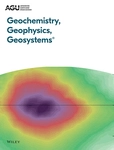 | Borehole Seismic Observations From the Chicxulub Impact Drilling: Implications for Seismic Reflectivity and Impact Damage Nixon, C. G., Schmitt, D. R., Kofman, R., Lofi, J., Gulick, S. P. S., Saustrup, S., Christeson, G. L., & Kring, D. A., Geochemistry, Geophysics, and Geosystems CPSH #0049 We conducted a vertical seismic profile (VSP) in the borehole of International Ocean Discovery Program/International Continental Scientific Drilling Program Expedition 364 Site M0077 to better understand the nature of the seismic reflectivity and the in situ seismic properties associated with the Chicxulub impact structure peak ring. |
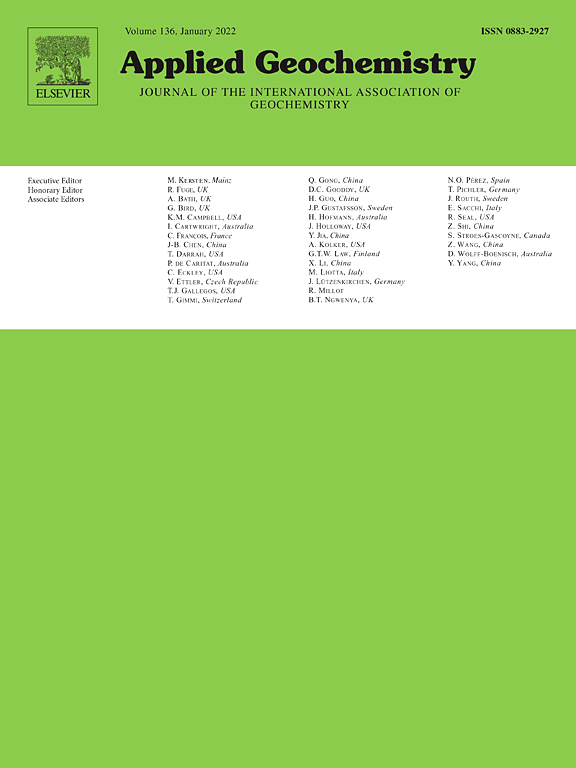 | Study of fluid circulation through the Chicxulub crater using Rock-Eval pyrolysis and fluid inclusions Hernandez-Terrones, L., Martinez, L., Gonzalez, E., Gulick, S., Lowery, C., Kring, D., et al., Applied Geochemistry. CPSH #0044 The aim of the study is to evaluate fluids circulation through the Chicxulub crater, and to determine the composition of hydrothermal fluids after the impact. Rock-Eval pyrolysis and fluid inclusion micro-thermometry analyses were performed. The technique has been routinely used for about fifteen years and has become a standard tool for hydrocarbon exploration. |
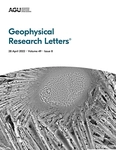 | Dynamics of Mixed Clathrate-Ice Shells on Ocean Worlds Carnahan, E., Vance, S.D., Hesse, M.A., Journaux, B., Sotin, C., Geophysical Research Letters, 49. CPSH #0052 The habitability of oceans within icy worlds depends on material and heat transport through their outer ice shells. Previous work shows a methane clathrate layer at the upper surface of the ice shell of Titan thickens the convecting region, while on Pluto a clathrate layer at the base of the ice shell hinders convection. |
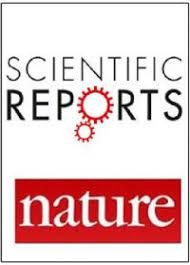 | Life before impact in the Chicxulub area: unique marine ichnological signatures preserved in crater suevite Rodríguez-Tovar, F.J., Kaskes, P., Ormö, J., Gulick, S., Lowery, C., et al., Scientific reports CPSH #0055 To fully assess the resilience and recovery of life in response to the Cretaceous–Paleogene (K-Pg) boundary mass extinction ~ 66 million years ago, it is paramount to understand biodiversity prior to the Chicxulub impact event. |
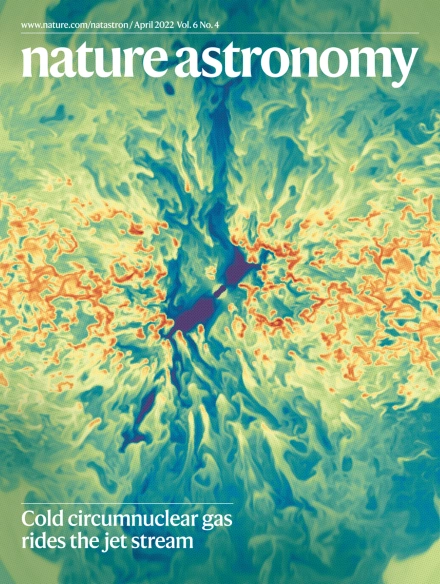 | A low-eccentricity migration pathway for a 13-h-period Earth analogue in a four-planet system Serrano, L.M., Gandolfi, D., Mustill, A.J. et al., Nature Astronomy CPSH #0042 It is commonly accepted that exoplanets with orbital periods shorter than one day, also known as ultra-short-period (USP) planets, formed further out within their natal protoplanetary disks before migrating to their current-day orbits via dynamical interactions. One of… |
 | Downward Oxidant Transport Through Europa’s Ice Shell by Density-Driven Brine Percolation Hesse, M.A., Jordan, J.S., Vance, S.D., Oza, A.V., Geophysical Research Letters CPSH #0051 Jupiter’s moon Europa is thought to have an ocean beneath its ice shell and the habitability of the internal ocean depends on the availability of redox gradients. Downward transport of radiolytic materials produced at the surface through the ice shell sets the flux of oxidants into the ocean... |
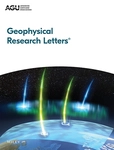 | The Basal Detectability of an Ice-Covered Mars by MARSIS C. Grima, J. Mouginot, W. Kofman, A. Hérique, P. Beck, Geophysical Research Letters CPSH #0047 The detection of anomalously strong relative basal reflectivity beneath the Martian South Polar Layered Deposits (SPLD) from the Mars Advanced Radar for Subsurface and Ionosphere Sounding (MARSIS) has led to hypotheses suggesting the presence of basal materials such as liquid water. Here, we propose a… |
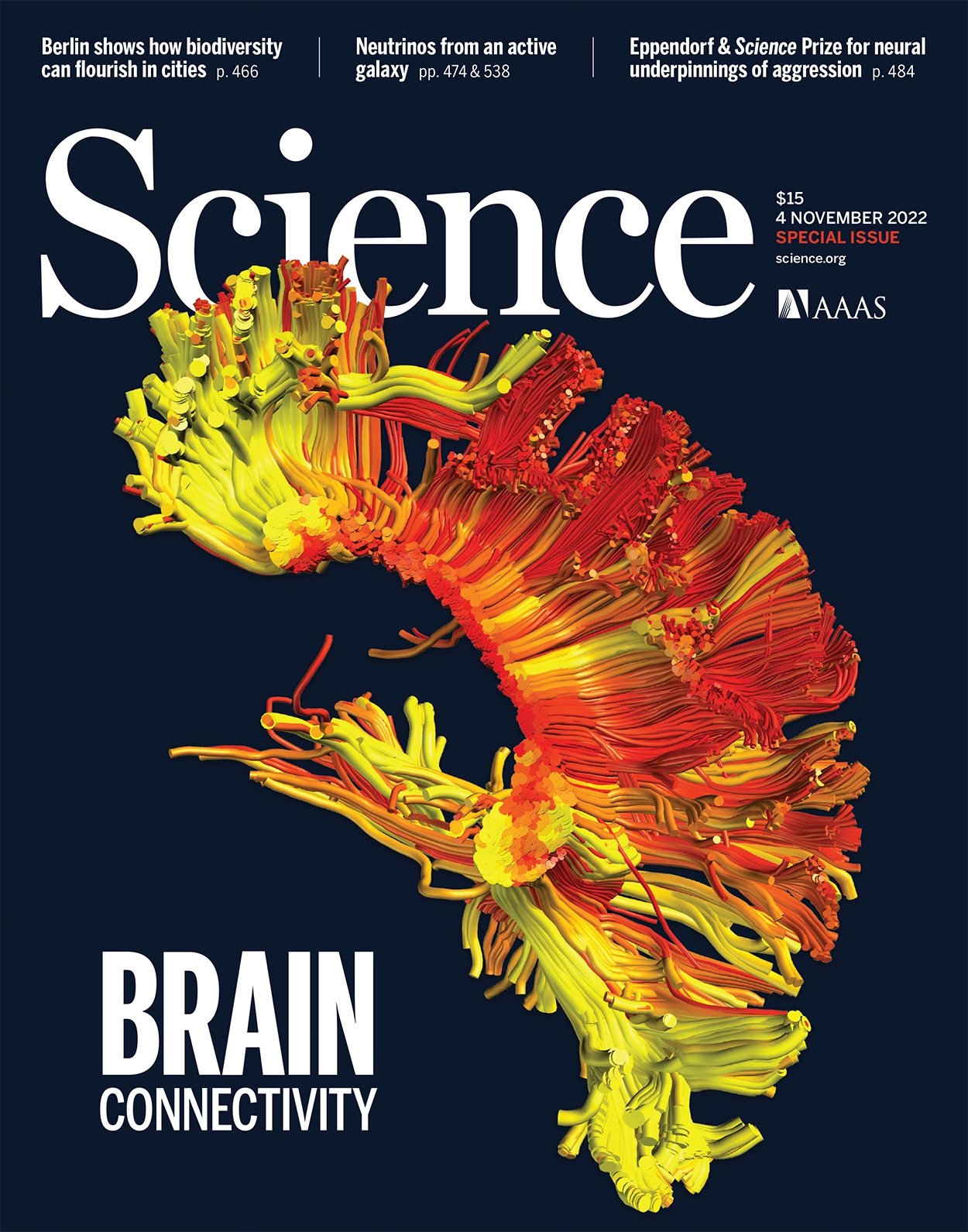 | Molten iron in Earth-like exoplanet cores Youjun Zhang and Jung-Fu Lin, Science CPSH #0043 Earth, the only known habitable planet in the Universe, has a magnetic field that shields organic life-forms from harmful radiation coming from the Sun and beyond. This magnetic field is generated by the churning of molten iron in its outer core. The habitability of exoplanets orbiting other stars could be… |
| 2021 | |
|---|---|
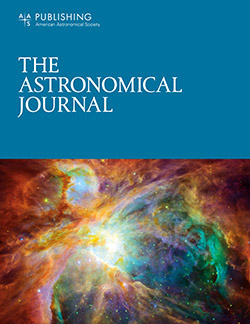 | A Hot Mars-sized Exoplanet Transiting an M Dwarf Caleb I. Cañas, Suvrath Mahadevan, William D. Cochran, Chad F. Bender, Eric D. Feigelson, Chester E. Harman, et al., Astronomical Journal CPSH #0038 We validate the planetary nature of an ultra-short-period planet orbiting the M dwarf KOI-4777. We use a combination of space-based photometry from Kepler, high-precision, near-infrared Doppler spectroscopy from the Habitable-zone Planet Finder, and adaptive optics imaging to characterize… |
 | Mapping the Chicxulub impact stratigraphy and peak ring using drilling and seismic data Gail L. Christeson, Joanna V. Morgan, and Sean P. S. Gulick, Journal of Geophysical Research: Planets CPSH #0033 We integrate high-resolution full-waveform velocity models with seismic reflection images to map the peak ring and impactite stratigraphy at the Chicxulub structure. International Ocean Discovery Program/International Continental scientific Drilling Program Site M0077 provides ground truth for our interpretations. The peak ring is narrower (∼10 km width) where it is high relief… |
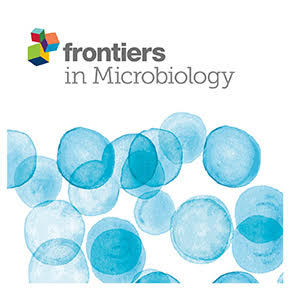 | Shaping of the Present-Day Deep Biosphere at Chicxulub by the Impact Catastrophe That Ended the Cretaceous Charles S. Cockell, Bettina Schaefer, Cornelia Wuchter, Marco J. L. Coolen, Kliti Grice, Luzie Schnieders, et al., Frontiers in Microbiology CPSH #0030 We report on the effect of the end-Cretaceous impact event on the present-day deep microbial biosphere at the impact site. IODP-ICDP Expedition 364 drilled into the peak ring of the Chicxulub crater, México, allowing us to investigate the microbial communities within this structure. Increased cell biomass was found in the impact suevite… |
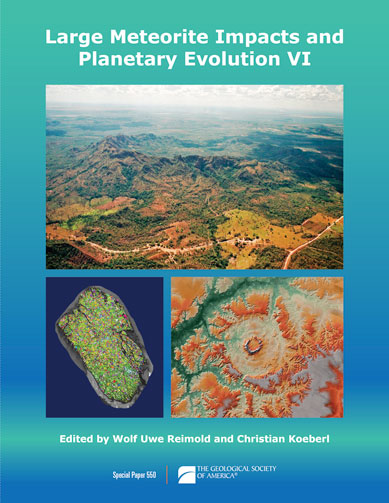 | Comparison of stress orientation indicators in Chicxulub’s peak ring: Kinked biotites, basal PDFs, and feather features Matthias Ebert, Michael H. Poelchau, Thomas Kenkmann, Sean P. S. Gulick, Brendon Hall, Johanna Lofi, et al., Geological Society of America Special Paper Volume 550 CPSH #0021 During hypervelocity impacts, target rocks are subjected to shock wave compression with high pressures and differential stresses. These differential stresses cause microscopic shear-induced deformation, which can be observed in the form of kinking, twinning, fracturing, and shear faulting in a range of minerals. The orientation of these shear-induced deformation features can be used to constrain… |
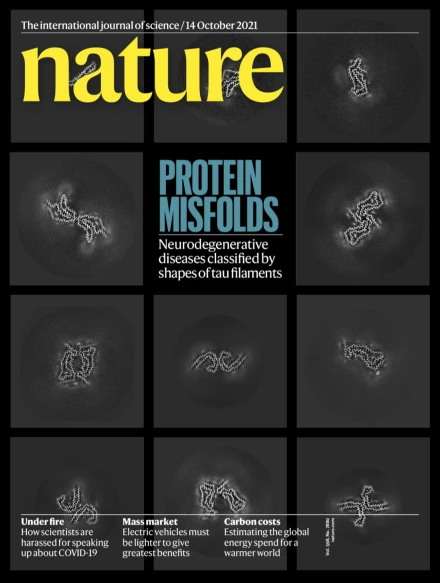 | The importance of lake breach floods for valley incision on early Mars Timothy A. Goudge, Alexander M. Morgan, Gaia Stucky de Quay and Caleb I. Fassett, Nature CPSH #0031 The surface environment of early Mars had an active hydrologic cycle, including flowing liquid water that carved river valleys and filled lake basins. Over 200 of these lake basins filled with sufficient water to breach the confining topography, causing catastrophic flooding and incision of outlet canyons. Much past work has recognized the local importance of lake breach floods on Mars for rapidly incising large valleys; however, on a global scale… |
 | New insights into the formation and emplacement of impact melt rocks within the Chicxulub impact structure, following the 2016 IODP-ICDP Expedition 364 Sietze J. de Graaff, Pim Kaskes, Thomas Déhais, Steven Goderis, Vinciane Debaille, Catherine H. Ross, et al., Geological Society of America Bulletin CPSH #0016 This study presents petrographic and geochemical characterization of 46 pre-impact rocks and 32 impactites containing and/or representing impact melt rock from the peak ring of the Chicxulub impact structure (Yucatán, Mexico). The aims were both to investigate the components that potentially contributed to the impact melt… |
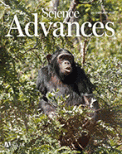 | Globally distributed iridium layer preserved within the Chicxulub impact structure Steven Goderis, Honami Sato, Ludovic Ferrière, Birger Schmitz, David Burney, Pim Kaskes, et al., Science Advances CPSH #0022 The Cretaceous-Paleogene (K-Pg) mass extinction is marked globally by elevated concentrations of iridium, emplaced by a hypervelocity impact event 66 million years ago. Here, we report new data from four independent laboratories that reveal a positive iridium anomaly within… |
 | TOI-532b: The Habitable-zone Planet Finder confirms a Large Super Neptune in the Neptune Desert orbiting a metal-rich M dwarf host Shubham Kanodia, Gudmundur Stefansson, Caleb I. Cañas, Marissa Maney, Andrea S. J. Lin, Joe P. Ninan, et al., Astronomical Journal CPSH #0034 We confirm the planetary nature of TOI-532b, using a combination of precise near-infrared radial velocities with the Habitable-zone Planet Finder, Transiting Exoplanet Survey Satellite (TESS) light curves, ground-based photometric follow up, and high-contrast imaging. TOI-532 is a faint (J ∼ 11.5) metal-rich M dwarf with Teff = 3957 ± 69 K and [Fe/H] = 0.38 ± 0.04; it hosts a transiting gaseous planet with a period of ∼2.3 days. Joint fitting of the radial velocities with the TESS and ground-based transits reveal… |
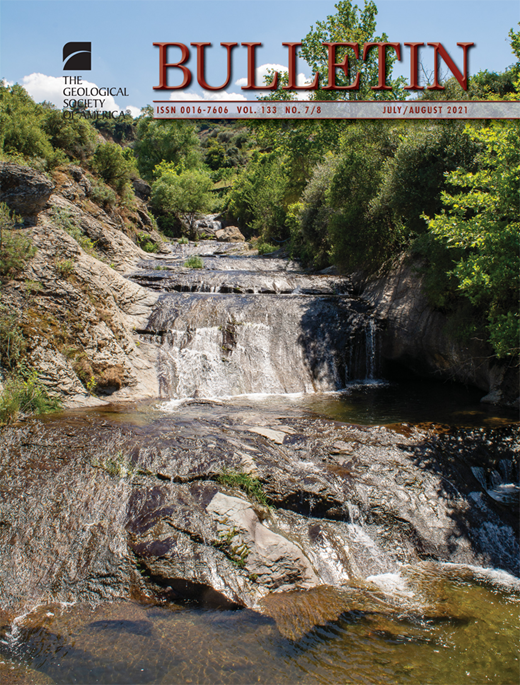 | Formation of the crater suevite sequence from the Chicxulub peak ring: A petrographic, geochemical, and sedimentological characterization Pim Kaskes, Sietze J. de Graaff, Jean-Guillaume Feignon, Thomas Déhais, Steven Goderis, Ludovic Ferriére, et al., Geological Society of America Bulletin CPSH #0029 This study presents a new classification of a ∼100-m-thick crater suevite sequence in the recent International Ocean Discovery Program (IODP)-International Continental Scientific Drilling Program (ICDP) Expedition 364 Hole M0077A drill core to better understand the formation of suevite on top of the Chicxulub peak ring. We provide an extensive data set for this succession… |
 | TIC 172900988: A Transiting Circumbinary Planet Detected in One Sector of TESS Data Veselin B. Kostov, Brian P. Powell, Jerome A. Orosz, William F. Welsh, William Cochran, Karen A. Collins, et al., Astronomical Journal CPSH #0035 We report the first discovery of a transiting circumbinary planet detected from a single sector of Transiting Exoplanet Survey Satellite (TESS) data. During Sector 21, the planet TIC 172900988b transited the primary star and then five days later it transited the secondary star. The binary is itself eclipsing, with a period P ≈ 19.7 days and an… |
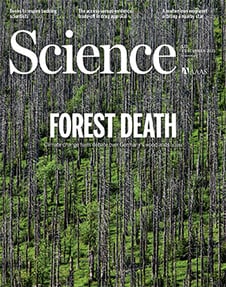 | GJ 367b: A dense, ultrashort-period sub-Earth planet transiting a nearby red dwarf star Kristine W. F. Lam, Szilárd Csizmadia, Nicola Astudillo-Defru, Xavier Bonfils, Davide Gandolfi, Sebastiano Padovan, et al., Science CPSH #0041 Ultrashort-period (USP) exoplanets have orbital periods shorter than 1 day. Precise masses and radii of USP exoplanets could provide constraints on their unknown formation and evolution processes. We report the detection and characterization of the USP planet GJ 367b using high-precision photometry and… |
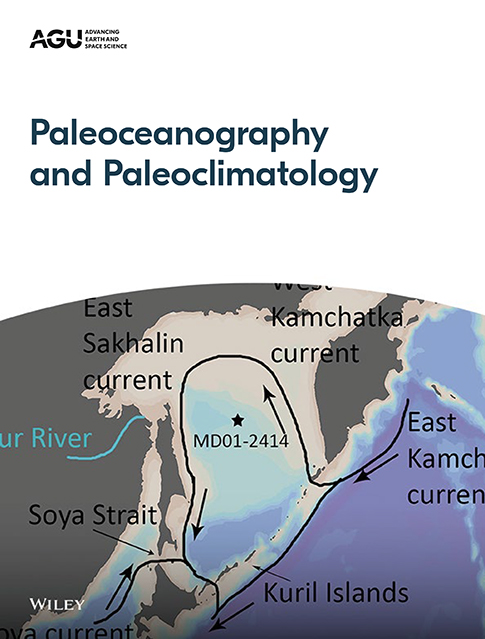 | Early Paleocene paleoceanography and export productivity in the Chicxulub crater Christopher M. Lowery, Heather Jones, Timothy J. Bralower, Ligia Perez Cruz, Catalina Gebhardt, Michael Whalen, et al., Paleoceanography and Paleoclimatology CPSH #0023 The Chicxulub impact caused a crash in productivity in the world’s oceans which contributed to the extinction of ∼75% of marine species. In the immediate aftermath of the extinction, export productivity was locally highly variable, with some sites, including the Chicxulub crater, recording elevated export… |
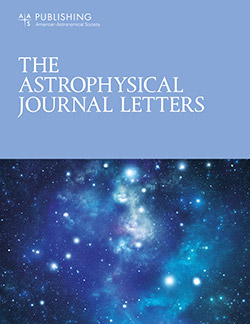 | The Habitable-zone Planet Finder Detects a Terrestrial-mass Planet Candidate Closely Orbiting Gliese 1151: The Likely Source of Coherent Low-frequency Radio Emission from an Inactive Star Suvrath Mahadevan, Guðmundur Stefánsson, Paul Robertson, Ryan C. Terrien, Joe P. Ninan, Rae J. Holcomb, et al., Astrophysical Journal Letters CPSH #0036 The coherent low-frequency radio emission detected by LOFAR from Gliese 1151, a quiescent M4.5 dwarf star, has radio emission properties consistent with theoretical expectations of star–planet interactions for an Earth-sized planet on a 1- to 5-day orbit. New near-infrared radial velocities from the Habitable-zone Planet Finder (HPF) spectrometer on the 10 m Hobby–Eberly Telescope at McDonald Observatory, combined with previous velocities from HARPS-N, reveal… |
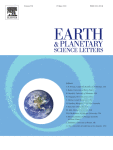 | Orientations of planar cataclasite zones in the Chicxulub peak ring as a ground truth for peak ring formation models Naoma McCall, Sean P. S. Gulick, Brendon Hall, Auriol S. P. Rae, Michael H. Poelchau, Ulrich Riller, et al., Earth and Planetary Science Letters CPSH #0040 Hypervelocity impact cratering is an important geologic process but the rarity of large terrestrial impact craters on Earth and the limited technical options to study cratering processes in the laboratory hinders our understanding of large-scale impact processes. Drill core recovered from the peak ring… |
 | The Diversity of Planetary Atmospheric Chemistry: Lessons and Challenges from Our Solar System and Extrasolar Planets Franklin P. Mills, Julianne I. Moses, Peter Gao, and Shang-Min Tsai, Space Science Reviews CPSH #0020 Atmospheres in our solar system range from oxidizing to reducing, transient to dense, veiled by clouds and hazes to transparent. Observations already suggest that exoplanets exhibit an even more diverse range of atmospheric chemistry and composition. Nevertheless, there are commonalities across the atmospheres of our solar system that provide valuable... |
 | Assessing event magnitude and target water depth for marine-target impacts: Ocean resurge deposits in the Chicxulub M0077A drill core compared Jens Ormö, Sean P. S. Gulick, Michael T. Whalen, David T. King Jr., Erik Sturkell, and Joanna Morgan, Earth and Planetary Science Letters CPSH #0028 The rim wall of water formed from even a modestly-sized marine impact may be kilometers in height. Although modeling has shown that this wave swiftly breaks and relatively rapidly loses energy during outwards travel from the impact site, the portion of the rim wall that collapses inwards may generate a resurge flow with tremendous transport energy. Here we compare… |
 | Modeling of observations of the OH nightglow in the venusian mesosphere Christopher D. Parkinson, Stephen W. Bougher, Franklin P. Mills, Yuk L. Yung, Amanda Brecht, Drew Shields and Michael Liemohn, Icarus CPSH #0026 Venus airglow emissions have been unambiguously detected in the wavelength ranges of 1.40–1.49 and 2.6–3.14 μm in limb observations by the Visible and Infrared Thermal Imaging Spectrometer (VIRTIS) onboard the Venus Express (VEx) spacecraft and are attributed to the OH(2–0) and OH(1–0) Meinel band transitions. The integrated (limb slant path) emission rates for these bands were measured by… |
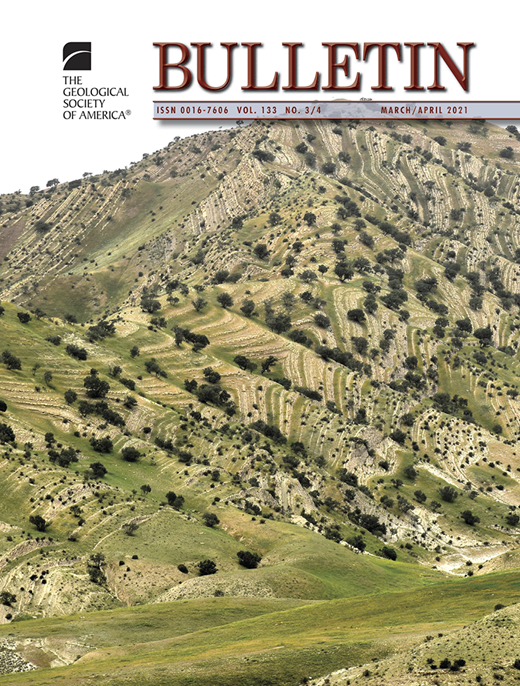 | Evidence of Carboniferous arc magmatism preserved in the Chicxulub impact structure Catherine H. Ross, Daniel F. Stockli, Cornelia Rasmussen, Sean P. S. Gulick, Sietze J. de Graaff, Philippe Claeys, et al., Geological Society of America Bulletin CPSH #0027 Determining the nature and age of the 200-km-wide Chicxulub impact target rock is an essential step in advancing our understanding of the Maya Block basement. Few age constraints exist for the northern Maya Block crust, specifically the basement underlying the… |
 | Ocean resurge-induced impact melt dynamics on the peak-ring of the Chicxulub impact structure, Mexico Felix M. Schulte, Axel Wittmann, Stefan Jung, Joanna V. Morgan, Sean P. S. Gulick, David A. Kring, et al., International Journal of Earth Sciences CPSH #0025 Core from Hole M0077 from IODP/ICDP Expedition 364 provides unprecedented evidence for the physical processes in effect during the interaction of impact melt with rock-debris-laden seawater, following a large meteorite impact into waters of the Yucatán shelf. Evidence for this interaction is based on petrographic… |
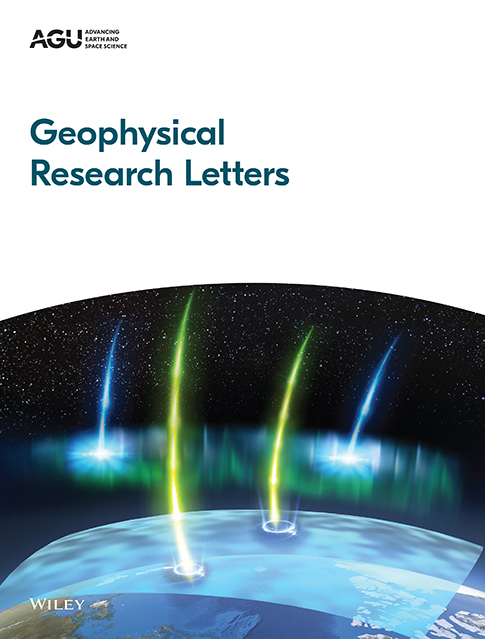 | Limits on runoff episode duration for early Mars: Integrating lake hydrology and climate models Gaia Stucky de Quay, Timothy A. Goudge, Edwin S. Kite, Caleb I. Fassett, and Scott D. Guzewich, Geophysical Research Letters CPSH #0032 Fluvio-lacustrine features on the martian surface attest to a climate that was radically different in the past. Since climate models have difficulty sustaining a liquid hydrosphere at the surface, multiple cycles of runoff episodes may have characterized the ancient Mars climate. A fundamental question thus remains: what was the duration of… |
 | The Mega-MUSCLES Spectral Energy Distribution of TRAPPIST-1 David J. Wilson, Cynthia S. Froning, Girish M. Duvvuri, Kevin France, Allison Youngblood, P. Christian Schneider, et al., Astrophysical Journal We present a 5 Å–100 μm spectral energy distribution (SED) of the ultracool dwarf star TRAPPIST-1, obtained as part of the Mega-MUSCLES Treasury Survey. The SED combines ultraviolet and blue-optical spectroscopy obtained with the Hubble Space Telescope… |
 | Shock impedance amplified impact deformation of zircon in granitic rocks from the Chicxulub impact crater Axel Wittmann, Aaron J. Cavosie, Nicholas E. Timms, Ludovic Ferrière, Auriol Rae, Cornelia Rasmussen, et al., Earth and Planetary Science Letters CPSH #0037 Zircon is a precise chronometer and prominent recorder of impact deformation. However, many impact-induced features in zircon are poorly calibrated, sometimes due to contradicting experimental data, in other instances due to the lack of systematic studies of impact-deformed zircon. To resolve issues with the shock petrographic use of zircon, we classified impact deformation features in… |
 | Shock-deformed zircon from the Chicxulub impact crater and implications for cratering process Jiawei Zhao, Long Xiao, Zhiyong Xiao, Joanna V. Morgan, Gordon R. Osinski, Clive R. Neal, et al., Geology CPSH #0024 Large impact structures with peak rings are common landforms across the solar system, and their formation has implications for both the interior structure and thermal evolution of planetary bodies. Numerical modeling and structural studies have been used to simulate and… |
| 2020 | |
|---|---|
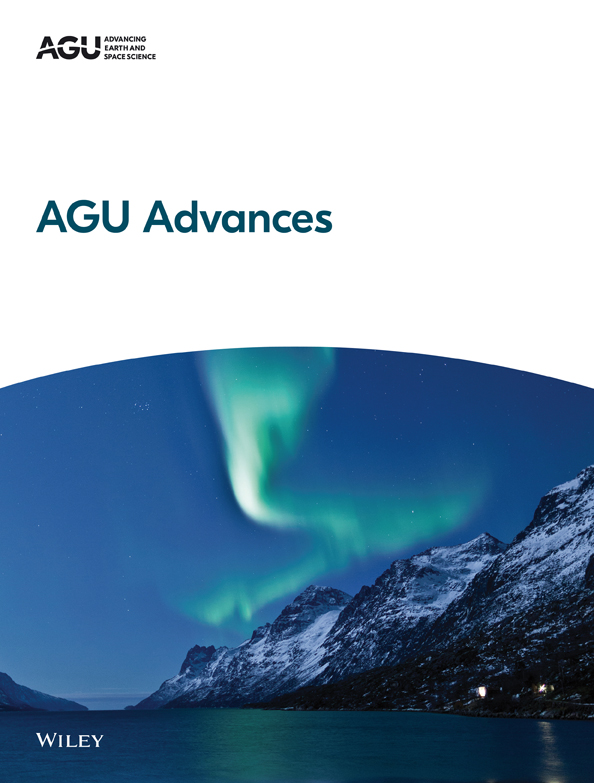 | The Habitat of the Nascent Chicxulub Crater Timothy J. Bralower, Julie Cosmidis, Matthew S. Fantle, Christopher M. Lowery, Benjamin H. Passey, Sean P. S. Gulick, et al., AGU Advances CPSH #0018 An expanded sedimentary section provides an opportunity to elucidate conditions in the nascent Chicxulub crater during the hours to millennia after the Cretaceous‐Paleogene (K‐Pg) boundary impact. The sediments were deposited… |
 | Precise mass and radius of a transiting super-Earth planet orbiting the M dwarf TOI-1235: a planet in the radius gap? Paz Bluhm, Rafael Luque, Nestor Espinoza, Enric Palle, Jose A. Caballero, Stefan Dreizler, et al., Astronomy & Astrophysics CPSH #0002 We report the confirmation of a transiting planet around the bright weakly active M0.5 V star TOI-1235 (TYC 4384–1735–1, V ≈ 11.5 mag), whose transit signal was detected in the photometric time series of sectors 14, 20, and 21 of the TESS space mission. We confirm the planetary nature of the transit signal… |
 | Origin of a global carbonate layer deposited in the aftermath of the Cretaceous-Paleogene boundary impact Timothy J. Bralower, Julie Cosmidis, Peter J. Heaney, Lee R. Kump, Joanna V. Morgan, Dustin T. Harper, et al., Earth and Planetary Science Letters CPSH #0009 Microcrystalline calcite (micrite) dominates the sedimentary record of the aftermath of the Cretaceous–Paleogene (K–Pg) impact at 31 sites globally, with records ranging from the deep ocean to the Chicxulub impact crater, over intervals ranging from a few centimeters to more than seventeen meters. This micrite-rich layer provides important information about… |
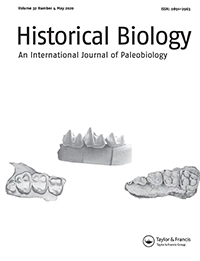 | Myriapod divergence times differ between molecular clock and fossil evidence: U/Pb zircon ages of the earliest fossil millipede-bearing sediments and their significance Michael E. Brookfield, Elizabeth J. Catlos, and Stephanie E. Suarez, Historical Biology Molecular clock calculations suggest a late Cambrian (~ 500 Ma) divergence of myriapod classes. Yet, the earliest myriapods only appear in the latest Silurian (~425 Ma). 75 million years later; though correlation with the standard marine-based geological time scale is difficult. We radiometrically dated (U/Pb method) zircons… |
 | A Warm Jupiter Transiting an M Dwarf: A TESS Single-transit Event Confirmed with the Habitable-zone Planet Finder Caleb I. Canas, Gudmundur Stefansson, Shubham Kanodia, Suvrath Mahadevan, William D. Cochran, Michael Endl, et al., Astronomical Journal CPSH #0004 We confirm the planetary nature of a warm Jupiter transiting the early M dwarf TOI-1899 using a combination of available TESS photometry; high-precision, near-infrared spectroscopy with the Habitable-zone Planet Finder; and speckle and adaptive optics imaging. The data reveal… |
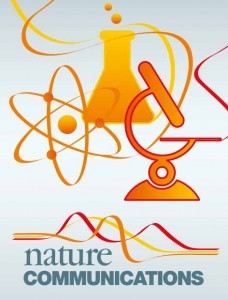 | A steeply-inclined trajectory for the Chicxulub impact Gareth S. Collins, Neel Patel, Thomas M. Davison, Auriol S. P. Rae, Joanna V. Morgan, Sean P. S. Gulick, and the IODP-ICDP Expedition 364 Scientists, Nature Communications The environmental severity of large impacts on Earth is influenced by their impact trajectory. Impact direction and angle to the target plane affect the volume and depth of origin of vaporized target, as well as the trajectories of ejected material. The asteroid impact that formed… |
 | Resilience of marine invertebrate communities during the early Cenozoic hyperthermals William J. Foster, Christopher L. Garvie, Anna M. Weiss, A. Drew Muscente, Martin Aberhan, John W. Counts, and Rowan C. Martindale, Scientific Reports The hyperthermal events of the Cenozoic, including the Paleocene-Eocene Thermal Maximum, provide an opportunity to investigate the potential effects of climate warming on marine ecosystems. Here, we examine the shallow benthic marine communities preserved in the late Cretaceous… |
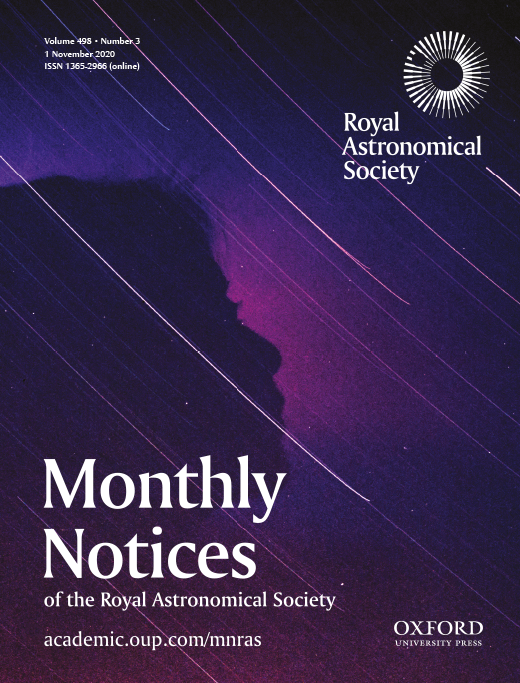 | The TOI-763 system: sub-Neptunes orbiting a Sun-like star Malcolm Fridlund, John Livingston, Davide Gandolfi, Carina M. Persson, Kristine W. F. Lam, Keivan G. Stassun, et al., Monthly Notices of the Royal Astronomical Society CPSH #0014 We report the discovery of a planetary system orbiting TOI-763(aka CD-39 7945), a V = 10.2, high proper motion G-type dwarf star that was photometrically monitored by the TESS space mission in Sector 10. We obtain and model the stellar spectrum and find an object slightly smaller than the Sun, and somewhat older, but with… |
 | Aluminum-26 Enrichment in the Surface of Protostellar Disks Due to Protostellar Cosmic Rays Brandt A. L. Gaches, Stefanie Walch, Stella S. R. Offner, and Carsten Münker, Astrophysical Journal CPSH #0008 The radioactive decay of aluminum-26 (26Al) is an important heating source in early planet formation. Since its discovery, there have been several mechanisms proposed to introduce 26Al into protoplanetary disks, primarily through contamination by external sources. We propose a local mechanism… |
 | The Carbonate Geochemistry of Enceladus’ Ocean Christopher R. Glein and J. Hunter Waite, Geophysical Research Letters The plume composition at Enceladus contains clues about conditions and processes in the interior. We present new geochemical interpretations of Cassini mass spectrometry data from the plume gas and salt‐rich ice grains. It is found that self‐consistency between the data sets can be achieved with… |
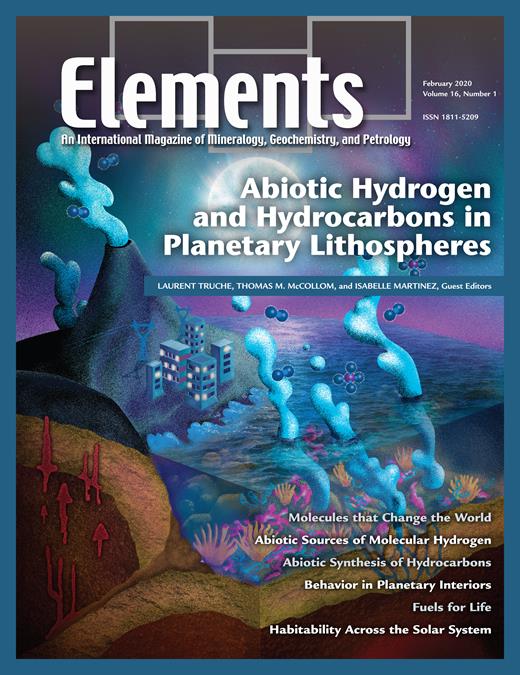 | Hydrogen, Hydrocarbons, and Habitability Across the Solar System Christopher R. Glein and Mikhail Yu. Zolotov, Elements The ingredients to make an environment habitable (e.g., liquid water, chemical disequilibria, and organic molecules) are found throughout the solar system. Liquid water has existed transiently on some bodies and persistently as oceans on others. Molecular hydrogen occurs in a plume on Saturn’s moon Enceladus. It can drive the reduction of CO2 to release energy. Methane has been observed… |
 | TOI-1728b: The Habitable-zone Planet Finder Confirms a Warm Super-Neptune Orbiting an M-dwarf Host Shubham Kanodia, Caleb I. Canas, Gudmundur Stefansson, Joe P. Ninan, Leslie Hebb, Andrea S. J. Lin, et al., Astrophysical Journal CPSH #0012 We confirm the planetary nature of TOI-1728b using a combination of ground-based photometry, near-infrared Doppler velocimetry and spectroscopy with the Habitable-zone Planet Finder. TOI-1728 is an old, inactive M0 star with T eff =  K, which hosts a transiting super-Neptune at an orbital period of ~3.49 days. Joint fitting of the radial velocities and TESS and ground-based transits yields… K, which hosts a transiting super-Neptune at an orbital period of ~3.49 days. Joint fitting of the radial velocities and TESS and ground-based transits yields… |
 | Probing the hydrothermal system of the Chicxulub impact crater David A. Kring, Sonia M. Tikoo, Martin Schmieder, Ulrich Riller, Mario Rebolledo-Vieyra, Sarah L. Simpson, et al., Science Advances The ~180-km-diameter Chicxulub peak-ring crater and ~240-km multiring basin, produced by the impact that terminated the Cretaceous, is the largest remaining intact impact basin on Earth. International Ocean Discovery Program (IODP) and International Continental Scientific Drilling Program (ICDP) Expedition 364 drilled to a depth of 1335 m below the sea floor… |
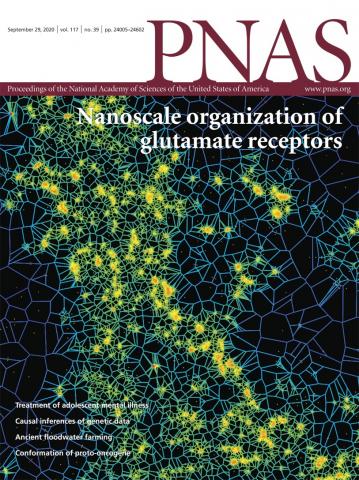 | Organic matter from the Chicxulub crater exacerbated the K–Pg impact winter Shelby L. Lyons, Allison T. Karp, Timothy J. Bralower, Kliti Grice, Bettina Schaefer, Sean P. S. Gulick, et al., Proceedings of the National Academy of Sciences of the United States of America (PNAS) CPSH #0015 Burn markers are observed in many records of the Cretaceous–Paleogene asteroid impact and mass extinction event. These materials could be derived from wildfires on land or from sedimentary rocks hit by the asteroid. We present a detailed record of molecular burn markers… |
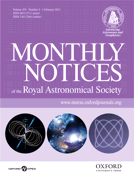 | K2-280 b – a low density warm sub-Saturn around a mildly evolved star Grzegorz Nowak, Enric Palle, Davide Gandolfi, Hans J. Deeg, Teruyuki Hirano, Oscar Barragán, et al., Monthly Notices of the Royal Astronomical Society CPSH #0010 We present an independent discovery and detailed characterisation of K2-280 b, a transiting low density warm sub-Saturn in a 19.9-day moderately eccentric orbit… |
 | Intramolecular distribution of 13C/12C isotopes in amino acids of diverse origins Cornelia Rasmussen and David W. Hoffman, Amino Acids CPSH #0007 Carbon stable isotope analysis can provide information about the origin and synthetic pathways that produce organic molecules, with applications in chemical, medical and (bio)geochemical sciences. The 13C/12C isotope ratios of organics such as amino acids are most commonly obtained as whole molecule averages. In this study, we apply proton nuclear magnetic resonance spectroscopy… |
 | Spatial U-Pb age distribution in shock-recrystallized zircon – A case study from the Rochechouart impact structure, France Cornelia Rasmussen, Daniel F. Stockli, Timmons M. Erickson, and Martin Schmieder, Geochimica et Cosmochimica Acta Age determination of impact structures via the zircon U-Pb system remains challenging and often ambiguous due to highly variable effects of shock metamorphism on U-Pb geochronology. It is, therefore, crucial to link the observed zircon microtextures… |
 | Persistent Starspot Signals on M Dwarfs: Multiwavelength Doppler Observations with the Habitable-zone Planet Finder and Keck/HIRES Paul Robertson, Gudmundur Stefansson, Suvrath Mahadevan, Michael Endl, William D. Cochran, Corey Beard, et al., Astrophysical Journal CPSH #0003 Young, rapidly rotating M dwarfs exhibit prominent starspots, which create quasiperiodic signals in their photometric and Doppler spectroscopic measurements. The periodic Doppler signals can mimic radial velocity (RV) changes expected from orbiting exoplanets. Exoplanets can be distinguished from activity-induced false positives by… |
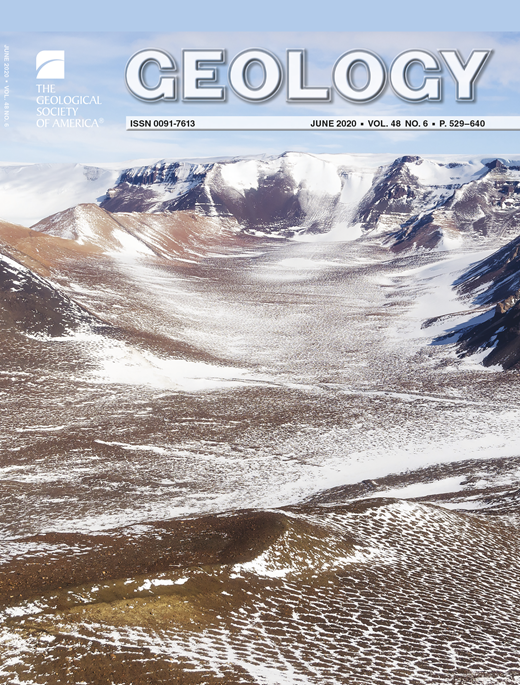 | Rapid macrobenthic diversification and stabilization after the end-Cretaceous mass extinction event Francisco J. Rodríguez-Tovar, Christopher M. Lowery, Timothy J. Bralower, Sean P. S. Gulick, and Heather L. Jones, Geology CPSH #0006 Previous ichnological analysis at the Chicxulub impact crater, Yucatán Peninsula, México (International Ocean Discovery Program [IODP]/International Continental Scientific Drilling Program [ICDP] Site M0077), showed a surprisingly rapid initial tracemaker community recovery after the end-Cretaceous… |
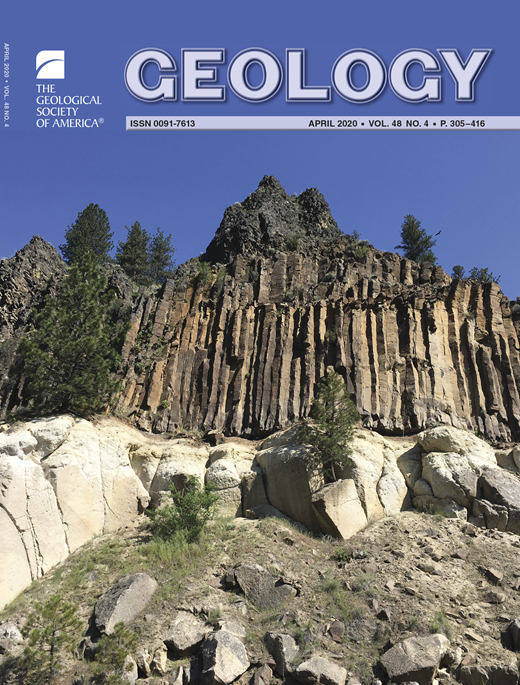 | Microbial life in the nascent Chicxulub crater Bettina Schaefer, Kliti Grice, Marco J. L. Coolen, Roger E. Summons, Xingqian Cui, Thorsten Bauersachs, et al., Geology The Chicxulub crater was formed by an asteroid impact at ca. 66 Ma. The impact is considered to have contributed to the end-Cretaceous mass extinction and reduced productivity in the world’s oceans due to a transient cessation of photosynthesis. Here, biomarker profiles extracted from crater core material reveal… |
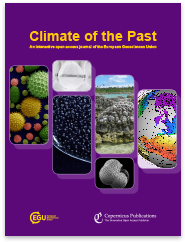 | Life and death in the Chicxulub impact crater: a record of the Paleocene–Eocene Thermal Maximum Vann Smith, Sophie Warny, Kliti Grice, Bettina Schaefer, Michael T. Whalen, Johan Vellekoop, et al., Climate of the Past CPSH #0013 Thermal stress on the biosphere during the extreme warmth of the Paleocene–Eocene Thermal Maximum (PETM) was most severe at low latitudes, with sea surface temperatures at some localities exceeding the 35 ∘C at which marine organisms experience heat stress. Relatively few equivalent terrestrial sections have been identified, and the response of land plants… |
 | A Mini-Neptune and a Radius Valley Planet Orbiting the Nearby M2 Dwarf TOI-1266 in Its Venus Zone: Validation with the Habitable-zone Planet Finder Guðmundur Stefánsson, Ravi Kopparapu, Andrea Lin, Suvrath Mahadevan, Caleb I. Cañas, Shubham Kanodia, et al., Astronomical Journal CPSH #0017 We report on the validation of two planets orbiting the nearby (36 pc) M2 dwarf TOI-1266 observed by the TESS mission. This system is one of a few M dwarf multiplanet systems with close-in planets where the inner planet is substantially larger than the outer planet. The inner planet is sub-Neptune-sized… |
 | The Habitable Zone Planet Finder Reveals a High Mass and Low Obliquity for the Young Neptune K2-25b Gudmundur Stefansson, Suvrath Mahadevan, Marissa Maney, Joe P. Ninan, Paul Robertson, Jayadev Rajagopal, et al., Astronomical Journal CPSH #0001 Using radial velocity data from the Habitable Zone Planet Finder, we have measured the mass of the Neptune-sized planet K2-25b, as well as the obliquity of its M4.5 dwarf host star in the 600–800 Myr Hyades cluster. This is one of the youngest planetary systems for which both of these quantities have been measured and one of the very few… |
 | Precipitation and aridity constraints from paleolakes on early Mars Gaia Stucky de Quay, Timothy A. Goudge, and Caleb I. Fassett, Geology CPSH #0011 The ancient climate of Mars remains an enigma despite the abundance of in situ and remote-sensing data revealing hydrological activity in the past. The crux of this debate — informed by geomorphic studies, chemical alteration observations, and numerical climate models — is the… |
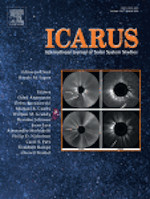 | Slope, elevation, and thermal inertia trends of martian recurring slope lineae initiation and termination points: Multiple possible processes occurring on coarse, sandy slopes Michelle Tebolt, Joseph Levy, Timothy Goudge, and Norbert Schorghofer, Icarus Recurring slope lineae (RSL) are dark linear features on the surface of Mars that advance incrementally downslope, fading and re-growing annually. Numerous hypotheses have been proposed to explain RSL formation, including “wet” models that involve liquid water orbrines and “dry” mechanisms involving… |
 | Shocked titanite records Chicxulub hydrothermal alteration and impact age Nicholas E. Timms, Christopher L. Kirkland, Aaron J. Cavosie, Auriol S. P. Rae, William D. A. Rickard, Noreen J. Evans, et al., Geochimica et Cosmochimica Acta CPSH #0005 Hydrothermal activity is a common phenomenon in the wake of impact events, yet identifying and dating impact hydrothermal systems can be challenging. This study provides the first detailed assessment of the effects of shock microstructures and impact-related alteration… |
 | Winding down the Chicxulub impact: The transition between impact and normal marine sedimentation near ground zero Michael T. Whalen, Sean P. S. Gulick, Christopher M. Lowery, Timothy J. Bralower, Joanna V. Morgan, Kliti Grice, et al., Marine Geology CPSH #0019 The Chicxulub impact led to the formation of a ~ 200-km wide by ~1-km deep crater on México’s Yucatán Peninsula. Over a period of hours after the impact the ocean re-entered and covered the impact basin beneath… |
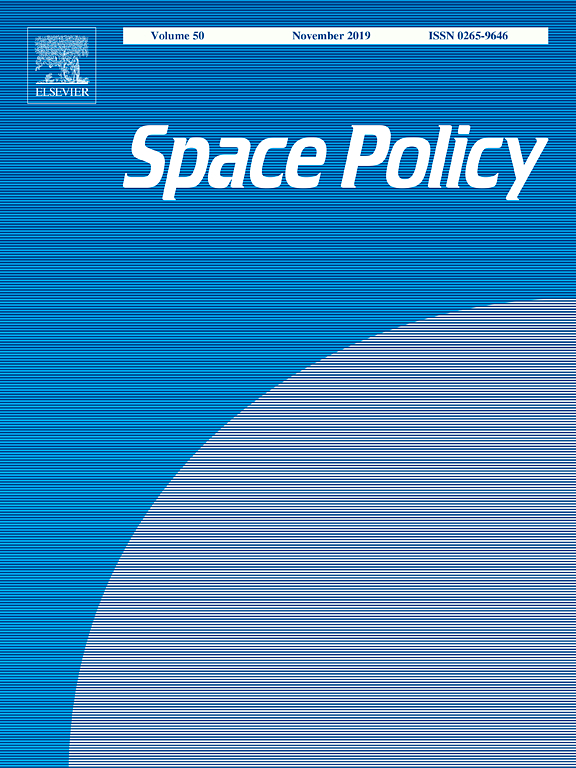 | The Search for Extraterrestrial Intelligence: A Realpolitik Consideration Kenneth W. Wisian and John W. Traphagan, Space Policy In the vigorous academic debate over the risks of the Search for ExtraTerrestrial Intelligence (SETI) and active Messaging ExtraTerrestrial Intelligence (ETI) (METI), a significant factor has been largely overlooked. Specifically, the risk of merely detecting an alien signal from passive SETI activity is usually… |
| 2019 | |
|---|---|
 | Testing the deltaic origin of fan deposits at Bradbury Crater, Mars Michael S. Bramble, Timothy A. Goudge, Ralph E. Milliken, and John F. Mustard, Icarus The stratigraphic architectures of three fan-shaped deposits at Bradbury crater, Mars were investigated to test the hypothesis that the deposits were formed in standing bodies of water. Quantitative stratigraphic methods were applied… |
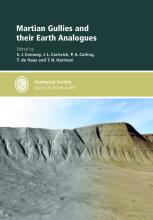 | Time will tell: temporal evolution of Martian gullies and palaeoclimatic implications Tjalling de Haas, Susan J. Conway, Frances E. G. Butcher, Joseph Levy, Peter M. Grindrod, Timothy A. Goudge, and Matthew R. Balme, Geological Society of London To understand Martian palaeoclimatic conditions and the role of volatiles therein, the spatiotemporal evolution of gullies must be deciphered. While the spatial distribution of gullies has been extensively studied, their temporal evolution is poorly understood. We show that gully size is similar… |
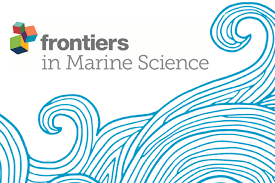 | The Future of Reef Ecosystems in the Gulf of Mexico: Insights From Coupled Climate Model Simulations and Ancient Hot-House Reefs Sylvia G. Dee, Mark A. Torres, Rowan C. Martindale, Anna Weiss, and Kristine L. DeLong, Frontiers in Marine Science Shallow water coral reefs and deep sea coral communities are sensitive to current and future environmental stresses, such as changes in sea surface temperatures (SST), salinity, carbonate chemistry, and acidity. Over the last half-century, some reef communities have been disappearing at an alarming pace. This study focuses on the Gulf of Mexico, where the majority of shallow coral reefs are reported to be… |
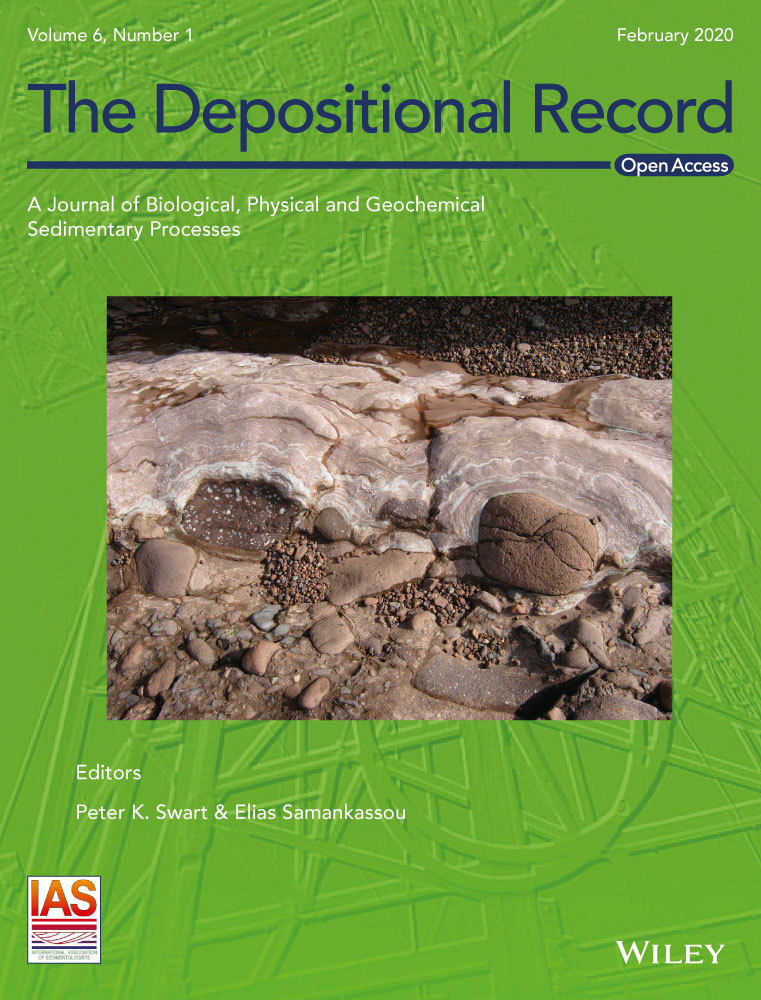 | Suppressed competitive exclusion enabled the proliferation of Permian/Triassic boundary microbialites William J. Foster, Katrin Heindel, Sylvain Richoz, Jana Gliwa, Daniel J. Lehrmann, Aymon Baud, et al., The Depositional Record During the earliest Triassic microbial mats flourished in the photic zones of marginal seas, generating widespread microbialites. It has been suggested that anoxic conditions in shallow marine environments, linked to the end‐Permian mass extinction, limited mat‐inhibiting metazoans allowing for this microbialite expansion. The presence of a diverse… |
 | A Hot Ultraviolet Flare on the M Dwarf Star GJ 674 Cynthia S. Froning, Adam Kowalski, Kevin France, R. O. Parke Loyd, P. Christian Schneider, Allison Youngblood, et al., Astrophysical Journal Letters As part of the Mega-Measurements of the Ultraviolet Spectral Characteristics of Low-Mass Exoplanetary Systems Hubble Space Telescope (HST) Treasury program, we obtained time-series ultraviolet spectroscopy of the M2.5V star, GJ 674. During the far-ultraviolet (FUV) monitoring observations, the target exhibited several small flares and one large flare (E FUV = 1030.75 erg) that persisted over the entirety… |
 | Deltaic deposits indicative of a paleo-coastline at Aeolis Dorsa, Mars Cory M. Hughes, Benjamin T. Cardenas, Timothy A. Goudge, and David Mohrig, Icarus Recent work at Aeolis Dorsa, Mars has identified exposure of fluvial sedimentary outcrop deposited early in martian history, likely during the late Hesperian or earlier. Here, we examine a ∼1200 km2 exposure of sedimentary outcrop in southeast Aeolis Dorsa. Total thickness of the stratigraphic section exceeds 100 m. We identify eight discrete complexes… |
 | The first day of the Cenozoic Sean P. S. Gulick, Timothy J. Bralower, Jens Ormö, Brendon Hall, Kliti Grice, Bettina Schaefer, et al., Proceeding of the National Academy of Sciences Highly expanded Cretaceous–Paleogene (K-Pg) boundary section from the Chicxulub peak ring, recovered by International Ocean Discovery Program (IODP)–International Continental Scientific Drilling Program (ICDP) Expedition 364, provides an unprecedented window into the immediate aftermath of the impact. Site M0077 includes ∼130 m of impact melt rock and suevite deposited the first day of the Cenozoic covered by <1 m of micrite-rich carbonate deposited over subsequent weeks to years. We present an interpreted series of events… |
 | Ocean Drilling Perspectives on Meteorite Impacts Christopher M. Lowery, Joanna V. Morgan, Sean P. S. Gulick, Timothy J. Bralower, Gail L. Christeson, and the IODP-ICDP Expedition 364 Scientists, Oceanography Extraterrestrial impacts that reshape the surfaces of rocky bodies are ubiquitous in the solar system. On early Earth, impact structures may have nurtured the evolution of life. More recently, a large meteorite impact off the Yucatán Peninsula in Mexico at the end of the Cretaceous caused the disappearance of 75% of species known from the fossil record, including non-avian dinosaurs… |
 | The survival, recovery, and diversification of metazoan reef ecosystems following the end-Permian mass extinction event Rowan C. Martindale, William J. Foster, and Felicitász Velledits, Palaeogeography, Palaeoclimatology, Palaeoecology The Triassic Period records important ecological transitions in the aftermath of the end-Permian mass extinction and is a key interval in the evolution of modern coral reefs. There have been several critical developments in our understanding of Triassic reef evolution over the past decade: the timing of events and duration… |
 | Contributions from Accreted Organics to Titan’s Atmosphere: New Insights from Cometary and Chondritic Data Kelly E. Miller, Christopher R. Glein, and J. Hunter Waite Jr., Astrophysical Journal Since its discovery in the first half of the 20th century, scientists have puzzled over the origins of Titan’s atmosphere. Current models suggest that atmospheric N2 on Titan may have originated from NH3-bearing ice with N-isotopic ratios similar to those observed in NH2 in cometary comae (14N/15N ~ 136). In contrast, N2 ice appears to be too 15N poor to explain Titan’s atmosphere… |
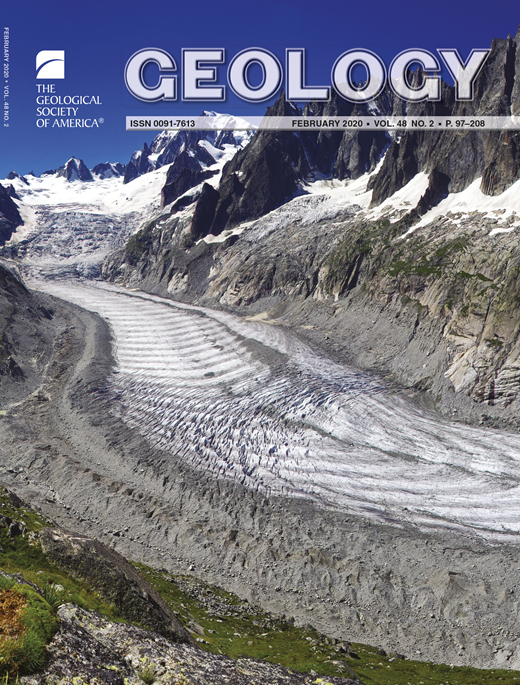 | Explosive interaction of impact melt and seawater following the Chicxulub impact event Gordon R. Osinski, Richard A. F. Grieve, Patrick J. A. Hill, Sarah L. Simpson, Charles Cockell, Gail L. Christeson, et al., Geology The impact of asteroids and comets with planetary surfaces is one of the most catastrophic, yet ubiquitous, geological processes in the solar system. The Chicxulub impact event, which has been linked to the Cretaceous-Paleogene (K-Pg) mass extinction marking the beginning of the Cenozoic Era, is arguably the most significant singular geological event in the past 100 million years… |
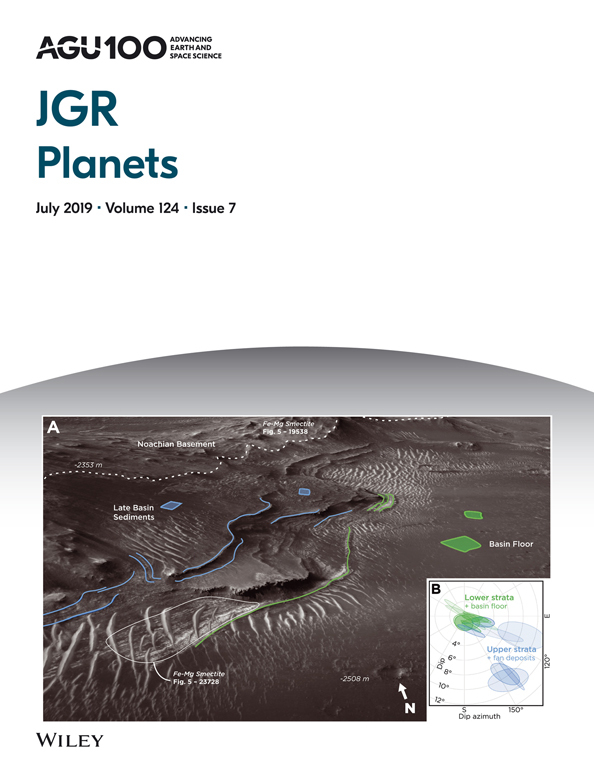 | Impact‐Induced Porosity and Microfracturing at the Chicxulub Impact Structure Auriol S. P. Rae, Gareth S. Collins, Joanna V. Morgan, Tobias Salge, Gail L. Christeson, Jody Leung, et al., Journal of Geophysical Research: Planets Porosity and its distribution in impact craters has an important effect on the petrophysical properties of impactites: seismic wave speeds and reflectivity, rock permeability, strength, and density. These properties are important for the identification of potential craters and… |
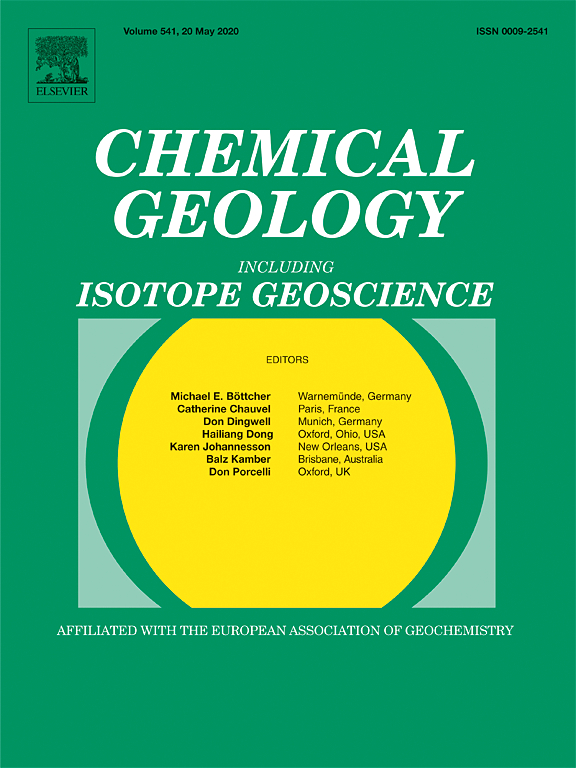 | U-Pb memory behavior in Chicxulub’s peak ring — Applying U-Pb depth profiling to shocked zircon Cornelia Rasmussen, Daniel F. Stockli, Catherine H. Ross, Annemarie Pickersgill, Sean P. Gulick, Martin Schmieder, et al., Chemical Geology The zircon U-Pb system is one of the most robust geochronometers, but during an impact event individual crystals can be affected differently by the passage of the shock wave and impact generated heat. Unraveling the potentially complex thermal history recorded by zircon crystals… |
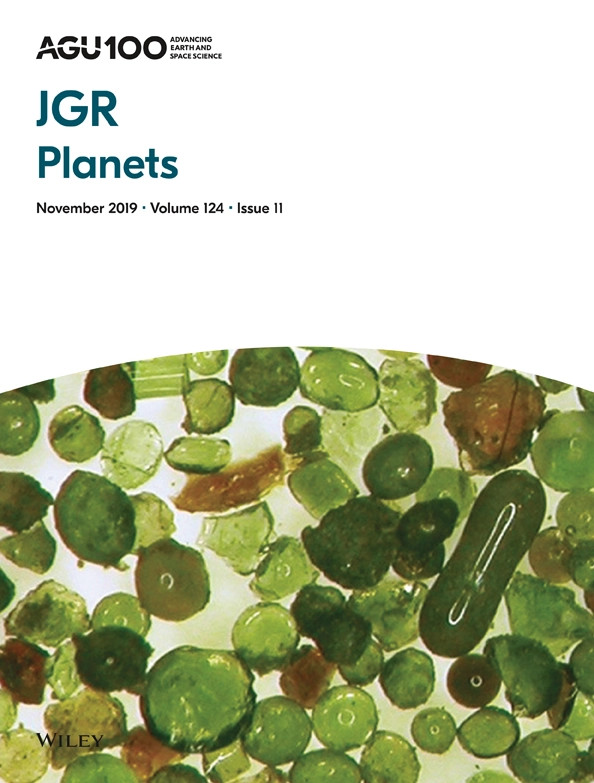 | High‐Resolution Thermal Environment of Recurring Slope Lineae in Palikir Crater, Mars, and Its Implications for Volatiles Norbert Schorghofer, Joseph S. Levy, and Timothy A. Goudge, Journal of Geophysical Research: Planets A thermophysical model for rough terrain is developed that is capable of processing spatial domains of megapixel size. This computational advance makes it possible to characterize thermal environments on Mars at unprecedented scale and at a resolution of 1 m per pixel. The model is applied to Palikir Crater, Mars, where… |
 | A U-Pb zircon age constraint on the oldest-recorded air-breathing land animal Stephanie E. Suarez, Michael E. Brookfield, Elizabeth J. Catlos, and Daniel F. Stöckli, PLoS One The oldest-known air-breathing land animal is the millipede Pneumodesmus newmani, found in the Cowie Harbour Fish Bed at Stonehaven, Scotland. Here we report the youngest, most concordant 238U-206Pb zircon age from ash below the fish bed of 413.7±4.4 Ma (±2σ), whereas the youngest age from a tuffaceous sandstone… |
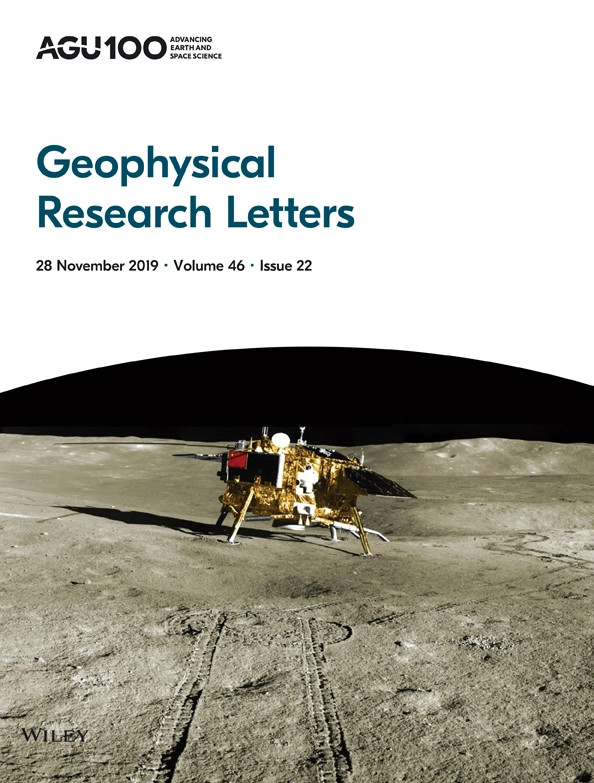 | Orbital Identification of Hydrated Silica in Jezero Crater, Mars Jesse D. Tarnas, John F. Mustard, Honglei Lin, Timothy A. Goudge, Elena S. Amador, Michael S. Bramble, et al., Geophysical Research Letters Silica has the highest demonstrated potential of any phase to preserve microfossils on Earth and therefore may host potential biosignatures on Mars. We detected hydrated silica in Jezero crater, the landing site of the National Aeronautics and Space Administration’s Mars 2020 rover mission, by applying Dynamic Aperture Factor Analysis/Target Transformation to images from… |
 | Decomposition of amino acids in water with application to in-situ measurements of Enceladus, Europa and other hydrothermally active icy ocean worlds Ngoc Truong, Adam A. Monroe, Christopher R. Glein, Ariel D. Anbar, and Jonathan I. Lunine, Icarus To test the potential of using amino acid abundances as a biosignature at icy ocean worlds, we investigate whether primordial amino acids (accreted or formed by early aqueous processes) could persist until the present time. By examining the decomposition kinetics of amino acids in aqueous solution based on existing laboratory rate data, we find… |
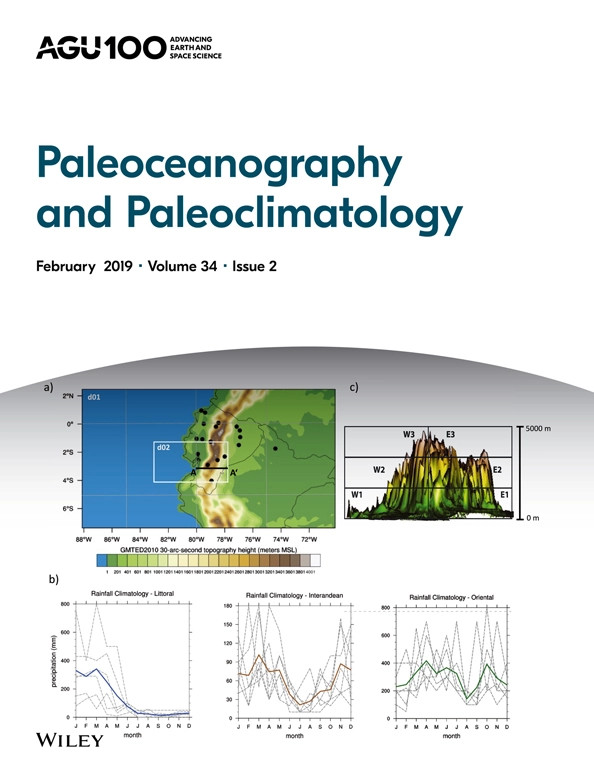 | Paleobiological Traits That Determined Scleractinian Coral Survival and Proliferation During the Late Paleocene and Early Eocene Hyperthermals Anna M. Weiss and Rowan C. Martindale, Paleoceanography and Paleoclimatology Coral reefs are particularly sensitive to environmental disturbances, such as rapid shifts in temperature or carbonate saturation. Work on modern reefs has suggested that some corals will fare better than others in times of stress and that their life history traits might correlate with species survival. These same traits can be applied to fossil taxa to assess… |
